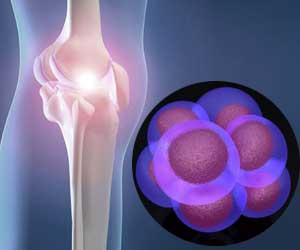 Arthritis is a disease in which bone and/or cartilage in the affected individual’s body is lost. This process of degeneration in turn reshapes the joint (causing, for instance, severely bent fingers in extreme, long-developing cases). A proper program of pain management and physical therapy – what we offer – is not only affective at alleviating symptoms of pain but also protects against progression of the disease.
Arthritis is a disease in which bone and/or cartilage in the affected individual’s body is lost. This process of degeneration in turn reshapes the joint (causing, for instance, severely bent fingers in extreme, long-developing cases). A proper program of pain management and physical therapy – what we offer – is not only affective at alleviating symptoms of pain but also protects against progression of the disease.
The healthy functioning of joints is disrupted in the case of osteoarthritis (1) Typically a joint experiences a fluid injury and repair process at the cellular level if it becomes damaged or re-damaged. This injury/repair cycle is completed by cells called chondroclasts and chondroblasts.
Osteoarthritis, however, does not allow these cells to perform their roles effectively. Instead, another type of cell, the osteoblast, enters the picture, creating additional cartilage and bone in improper locations – such as spurs (2). This nonstandard cellular development leads to swollen, painful body parts. Alleviating pain in joints, such as hand or knee pain relief, is then often medically sought.
Protein Release Hindered
Osteoarthritis prevents the cells that make up a person’s cartilage from releasing a sufficient quantity of protein when repair of joint cartilage is required. The demand for repair at a cellular level, then, is not met. Cartilage, which is typically taut, begins to loosen. As the arthritic condition becomes more ingrained, fraying of the cartilage occurs, as does cracking and pitting. The more degradation that occurs throughout the cartilage cells, the less flexible its fibers will be (3). It becomes less and less able to protect itself, creating a downward spiral. The joint in general is put at risk by cellular cartilage weakness, increasing the likelihood of deterioration.
Untreated Osteoarthritis
Osteoarthritis can quickly become painful, but treating it means that its progress can be slowed or stopped altogether. The reason that’s important is that, left untreated, the pitting and cracking can become more pronounced, eventually resulting in total removal of the cartilage. When no cartilage remains, a person begins to experience bone-on-bone direct contact during activity. The affected areas of bone become reshaped, then, as activity grinds down the cells, following the reshaping of the cartilage that has occurred. When the bones no longer join up properly, range of motion can decrease significantly.
Treated Osteoarthritis
Again, when osteoarthritis is treated, the deterioration can be mitigated. What we offer at the Atlanta Medical Clinic is extraordinary considered to many solutions for hand or knee pain relief or wherever cellular damage has become the most severe: a complete spectrum of pain management solutions, not just injections and medications but also chiropractic treatment and physical therapy as necessary. Contact us today to learn more about how an integrative solution can deter your osteoarthritis and aid you in returning to a healthy, fully functional lifestyle.
References:
(2)http://www.medicinenet.com/osteoarthritis/article.htm
(3)http://www.webmd.com/osteoarthritis/guide/osteoarthritis-basics

Thank you for this thorough post and it will aware individuals that they should not rely on pain management, instead think about treatment.
Thank you for your comment, Dr. Greene. We’re glad that you liked our blog post!